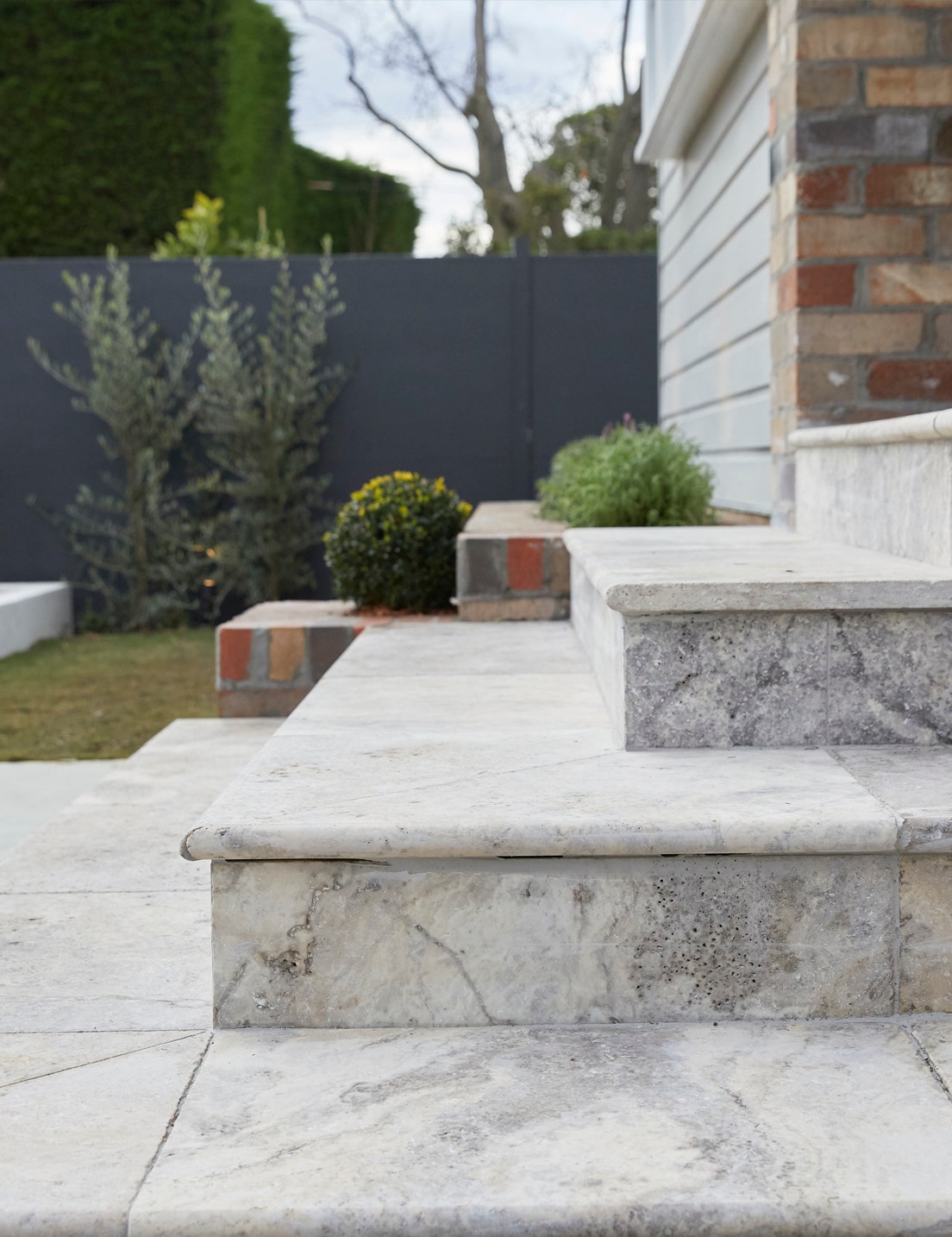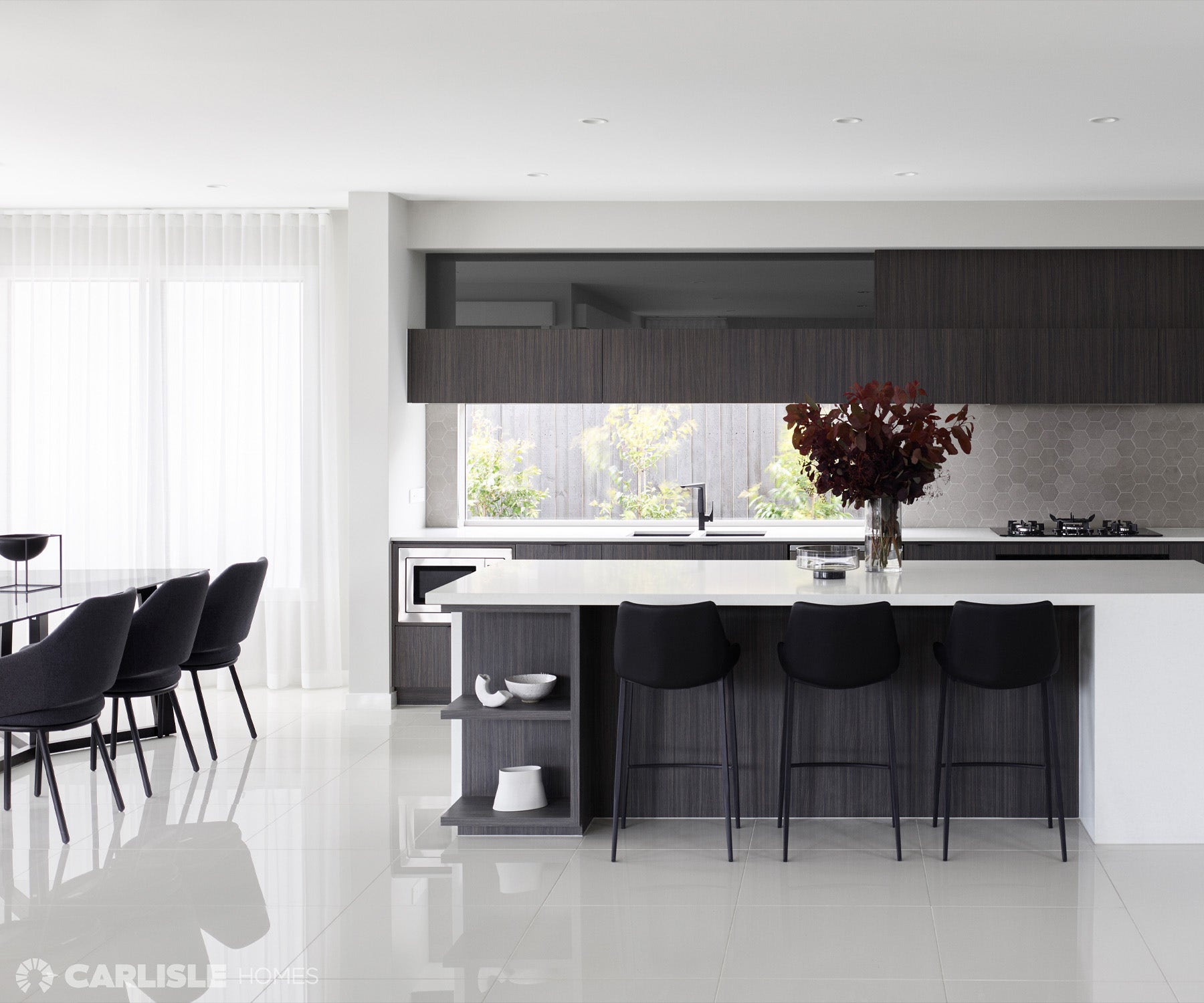
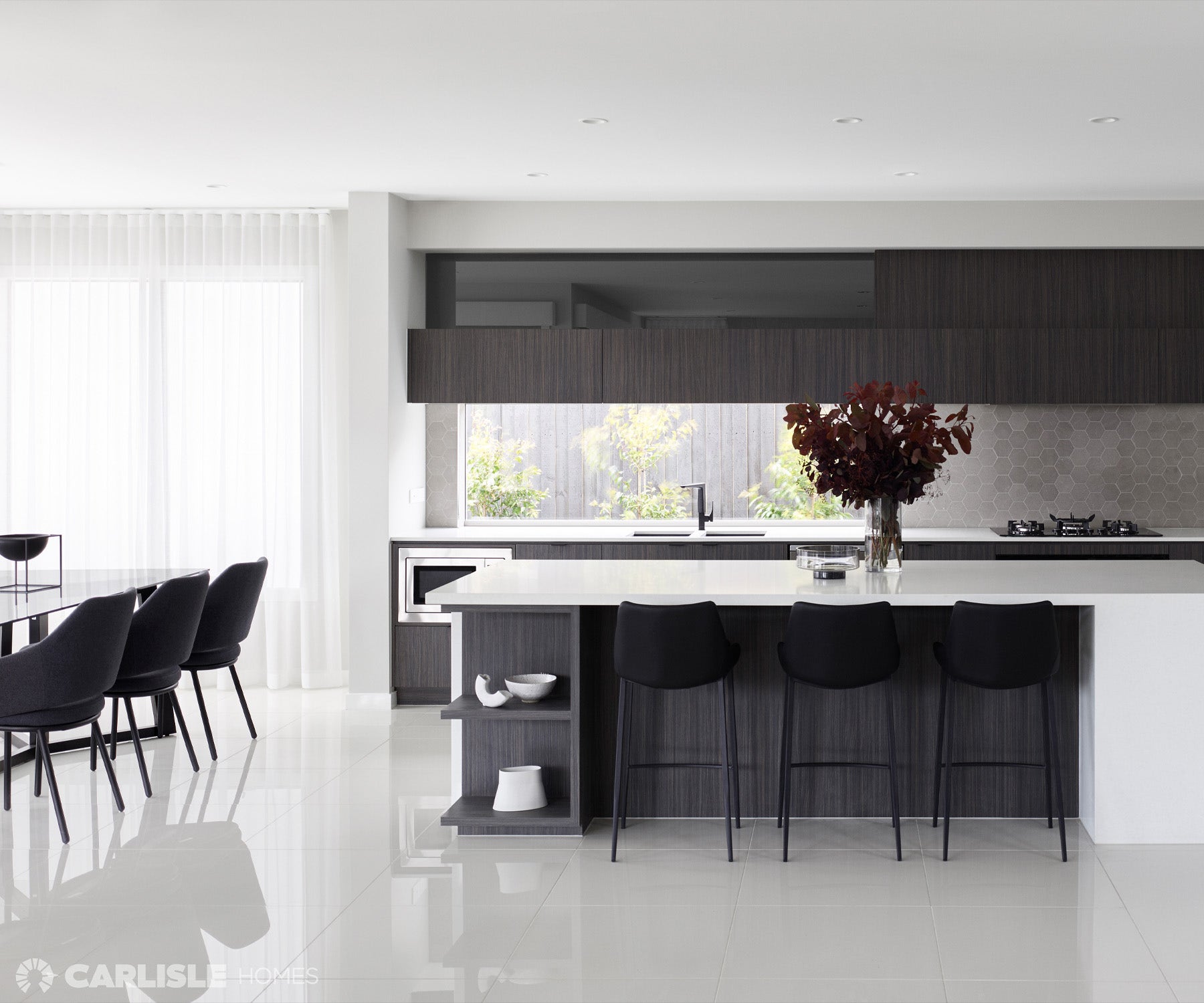

All About Tiles
Handy Things To Know About Tiles
From tile shapes to finishes to wear ratings, there's a lot to know about tiles! Everything you need to know is here on this super handy page so you can choose your tiles with confidence.
Common Ceramic Tile Ratings Explained
Tiles are rated for slip, wear and variation. Discover what the ratings mean to help you select the right tile for your project. Getting technical, you could also read on for more information regarding building requirements for slip rating and information about fire rating of ceramic tiles, most of this is not usually needed for a home reno.
Click on any topic below and we’ll take you directly to our tips. Come back to this index at any time if you need more information.
| RATING TYPE | CLASSIFICATION |
| Wear ratings | Class 0 to Class 5 |
| Tile variation | V0 to V4 |
| Slip rating - pendulum | P0 to P5 |
| Slip rating - oil wet ramp | R9 to R13 |
| Slip rating - barefoot wet ramp | A, B, C |
Featured Tiles
Wall Tile: Atmosphere Mint Gloss
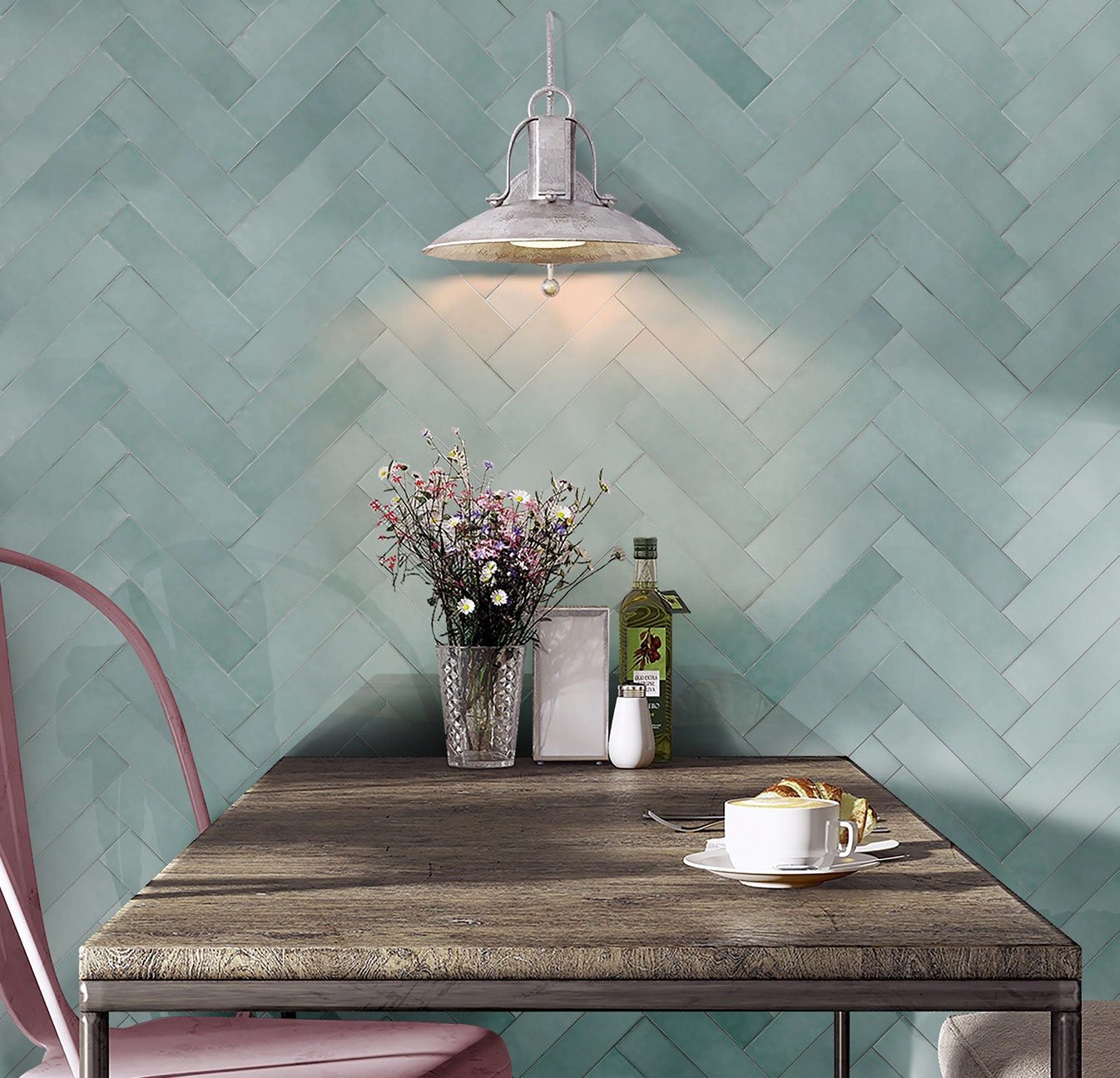

Wear Ratings Explained
You’ll hear about tiles having a wear rating which determines where the tile is best suited, for example, a tile with a wear rating of 0 can only be used on a wall and a tile with a wear rating of 5 can be used outside in heavy traffic and wear conditions. The surfaces of glazed floor tiles can be subjected to surface abrasion caused by foot traffic. Wear ratings, therefore, help you determine what tiles are a good match with different levels of foot traffic.
It’s important to choose tiles that are suitable for the area you are tiling so take note of your tile's wear rating and if you're unsure, speak to your local team of experts at your Beaumonts store. With the most suitable tile for your circumstances, you can trust your tiles will perform brilliantly for years to come.
Our Hot Tip: The area examples above are given as general indications only. All areas are different. For example, a Class 3 tile may perform well in a kitchen with no visible wear, while the same tile may show signs of scratching after some time in the laundry with a sandy, gravel path outside. It's always best to chat with our in-store experts to confirm which tile is best for your project.
Wear Ratings
The following class ratings have been developed to indicate the level of wear resistance and durability that you can expect from your chosen tiles and suggested applications.
| Wear Class 0 | While floor tiles can be used on the wall, wall tiles cannot be used on the floor. Tiles with a wear rating of 0 are not suitable for floors and are intended for wall use only. |
| Wear Class 1: Light Duty | Tiles in areas which are walked on with bare feet without abrasive dirt (for example residential ensuites and bedrooms without direct access from the outside). |
| Wear Class 2: Regular Duty | Tiles in areas which are walked on with soft-soled footwear or bare feet, with minimal amounts of abrasive dirt (for example residential bathrooms). |
| Wear Class 3: Medium Duty | Tiles in areas which are more often walked on by normal footwear, with small amounts of abrasive dirt (for example residential kitchens, halls, corridors, balconies and terraces). |
| Wear Class 4: Heavy Duty | Tiles which are walked on by regular traffic, with some abrasive dirt so that the conditions are more severe than class 3 (for example entrances, commercial kitchens, hotel, exhibition and sale rooms). |
| Wear Class 5: Extra Heavy Duty | Tiles which are subjected to severe pedestrian traffic over sustained periods with some abrasive dirt (for example public areas, shopping centres, airport concourses, hotel foyers, public walkways and industrial applications). |
Tile Variation Explained by Kyal & Kara
Our Hot Tip: You should always check your tiles before installation, also checking they are from the same production batch and you love the variation that you see.
Our Hot Tip: Everything you need to know about tiles is available in a handy download here.
Tile Variation
Kiln fired ceramic products have always had a degree of shade variation between tiles and different production batches due to the natural ingredients and small variations in firing temperatures, it’s this variation that makes tiles so unique and beautiful. After firing, tiles are graded, separated and packed into like shades and given a batch number. What this means is that if you need more tiles, you'll need to ask for tiles from the same batch number so you’ll know that they will look great together.
The ongoing development of digital glaze and ceramic printing has more recently enabled manufacturers to replicate variation between tiles to emulate; the many looks and faces of natural stone, the gorgeous natural variation in natural timber, antique brick looks, as well as replicating and celebrating all the different shades that are a feature of traditional hand-made tiles. These stunning replications, in our world, is named ‘variation’.
The following ratings have been developed to help you understand the level of unique variation you can expect from your tiles. Any tile rated V2 or above will show distinguishable colour, shade, texture or pattern differences between tiles. The higher the number, the more variation between individual tiles, like you’d see in nature.
We always recommend you check the full variation of tiles, especially tiles rated V3 and V4 during your selection, and ensure you dry lay V3 and V4 tiles before installation to ensure you’re totally happy with the variation range. It’s amazing how different the first tile can look to say tile six of the same range!
Tile Variations
If you are looking for a tile to emulate the look of its natural material, or you love the look of varying tones and colours, you’re going to love a tile that is rated V4. Follow our handle table below to understand different variation ratings.
|
|
V0 - Very Uniform Appearance |
The tiles are very uniform, solid in colour with no noticeable variation |
| V1 - Uniform Appearance | Differences between the pieces from the same production run (batch) are minimal. The appearance is uniform when installed | |
| V2 - Slight Variation | Clearly distinguishable texture and/or pattern within similar colour tones | |
| V3 - Moderate Variation | While the colour tones/design present on a single piece of tile will be indicative of all tiles, the colour tones/design on each piece may vary significantly from tile to tile | |
| V4 - Substantial Variation | Random colour tones/design differences from tile to tile, so that some tiles may feature completely different colour tones/designs from those on other tiles. This variation creates an artful and unique installation |
Featured Tiles
Bottom Wall Tile: Atmosphere Mint Gloss
Top Wall Tile: Atmosphere White Gloss
Floor Tile: Promenado White Textured
Our Hot Tip: Check out our blog post where our experts talk all things Slip & Appearance ratings!
Our Hot Tip: Everything you need to know about tiles is available in a handy download here.
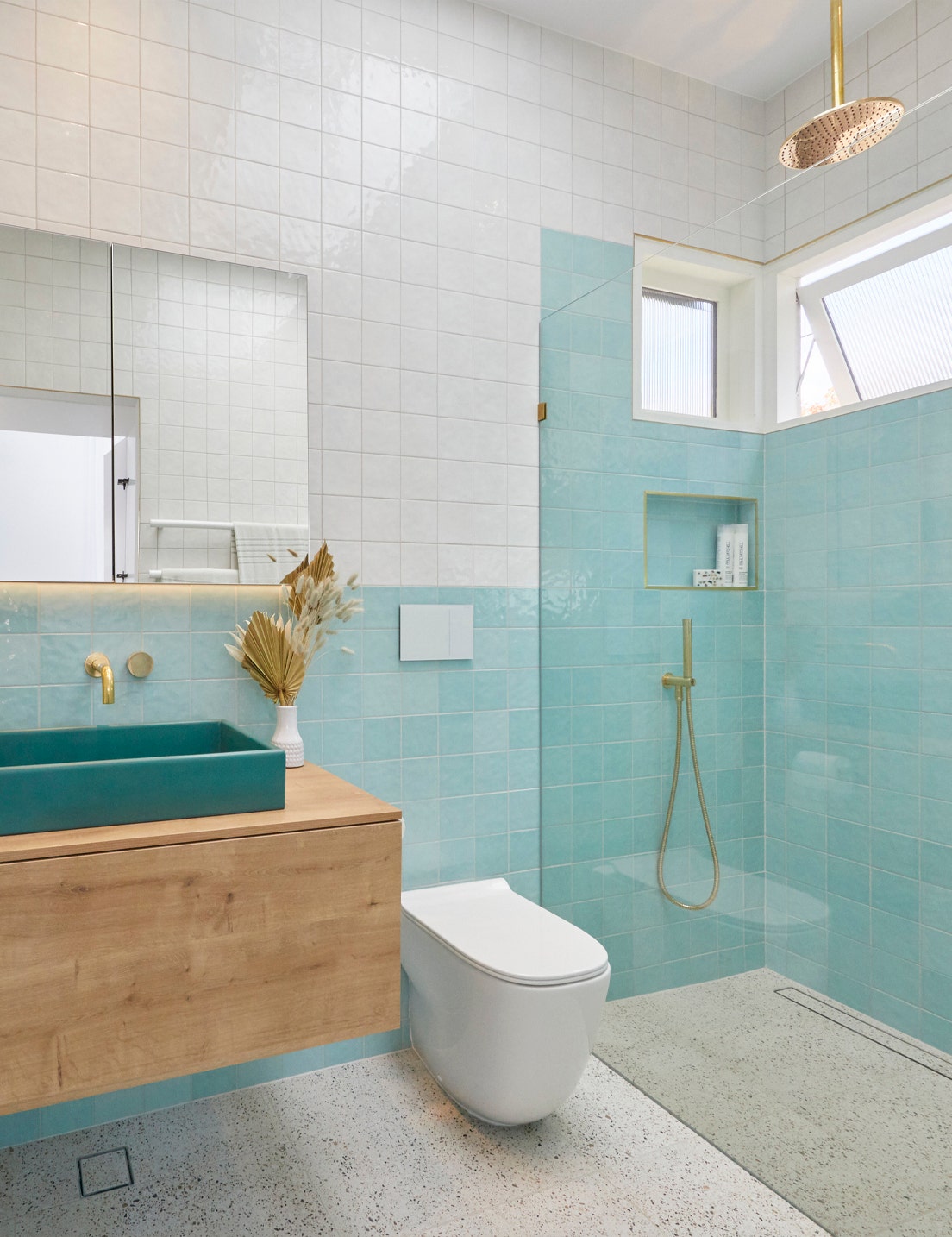

Slip Ratings Explained by Kyal & Kara
As a flooring option, tiles have so many benefits for their toughness and smoothness, among other great health benefits like being allergy-free. However, some tiles are smoother than others and may not be as suitable for wet areas where they may become slippery.
Our Hot Tip: Everything you need to know about tiles is available in a handy download here.
Tile Slip Ratings
Slip ratings have been developed, in accordance with Australian Standards, to help with the selection of tiles in circumstances where public safety is a priority. For residential buildings, the Australian Building Code and Australian Standards only mandate slip rated flooring for stair nosings, stair landings and ramps.
Slip ratings have been designed to make it easy to decide whether a tile is suitable for different areas like bathrooms, kitchens, outdoors or around pools. Other factors will also play a part in your choice but are mainly for commercial use, but good to know, for example, pedestrian stride and pace, along with any contamination of the surface by water, oil or foreign substances which are common factors in falls. Cleaning is therefore an important part of maintaining an appropriate level of slip resistance. Choose an appropriate slip-resistant tile for your project, remembering that the higher the level of slip resistance, generally the more effort is required for cleaning. A glossy tile may be suitable for general pedestrian traffic walking at a slow or moderate pace, provided that the surface is clean and dry. If the surface can become contaminated by water or other substance, it should be cleaned up immediately. If this happens regularly or if an area is subject to general pedestrian traffic walking more quickly, a higher slip resistant rated tile may be more suitable.
The three common slip resistance tests quoted in Australia are; the Pendulum test, the Oil Wet Ramp test, and the Barefoot Wet Ramp test. The Pendulum Test is a reliable, all-purpose indicator while the two ramp tests are designed to assess tile performance in oily and wet surface conditions respectively.
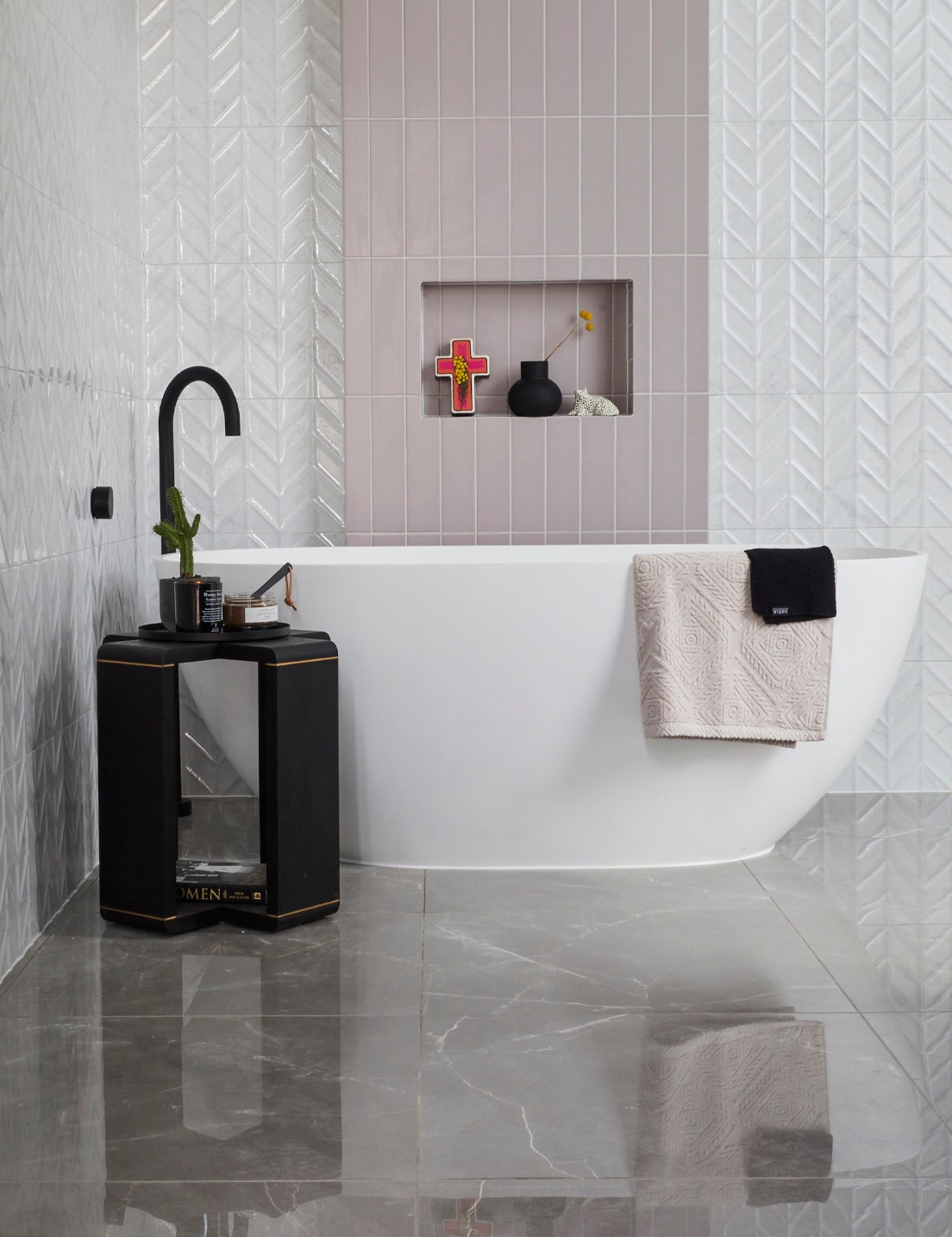

Pendulum Test (P0 – P5)
Beaumonts quality assurance team is on the case, ensuring you always have the right tile for the right purpose.
The details below are a little technical, but still good to know.
The Pendulum Test measures the frictional resistance between a wet tile and a foot-shaped mass fitted with a rubber slider mounted on a pendulum arm, mimicking a standard shoe sole striking a wet tile. The higher the number, the lower the risk of slipping. A tile with a rating of P3 or below is generally considered suitable for indoor flooring while a P4 or P5 has a lower slip risk and can be used outside or around a pool.
Pendulum Classification |
Skid Resistance Value [SRV] |
Slip Risk |
| P0 | Below 12 | Very high |
| P1 | 12-24 | Very high |
| P2 | 25-34 | High |
| P3 | 35-44 | Moderate |
| P4 | 45-54 | Low |
| P5 | Over 54 | Very Low |
Featured Tiles
Floor Tiles: Timeless Amani Grey
Our Hot Tip: Everything you need to know about tiles is available in a handy download here.
Oil-Wet Ramp Test (R9 – R13)
No one wants to feel unsafe or slip on their tiles, so our experts do what we call an Oil-Wet Ramp test to confirm what areas your tiles are OK to be laid in.
|
Corrected Mean Acceptance Angle (Degrees) |
Slip Risk |
| R9 | 6-10 | Very high |
| R10 | 10-19 | High |
| R11 | 19-27 | Moderate |
| R12 | 27-35 | Low |
| R13 | Over 35 | Very low |
Featured Tiles
Floor Tile: Basalt Blue Moon Swan
Our Hot Tip: Everything you need to know about tiles is available in a handy download here.
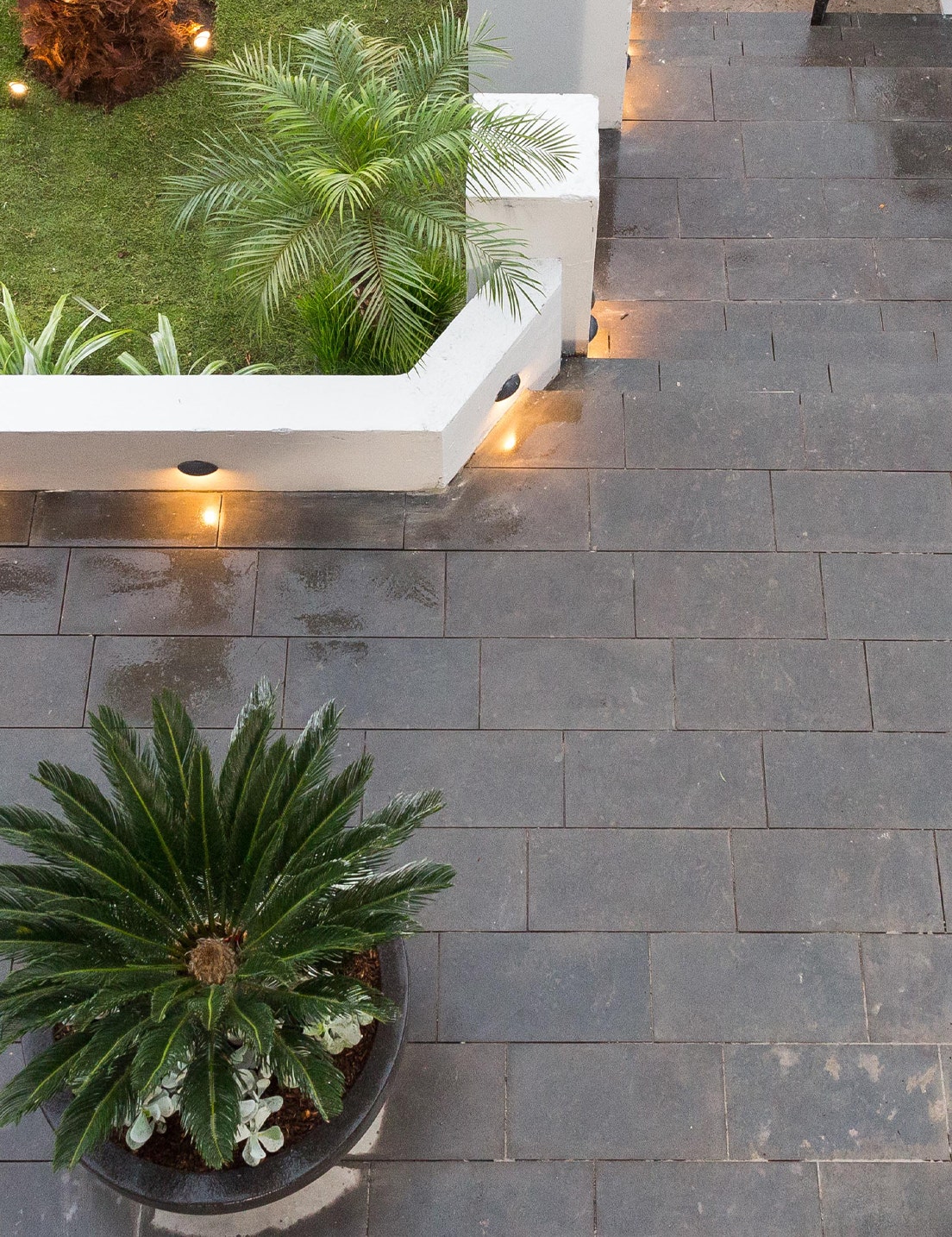

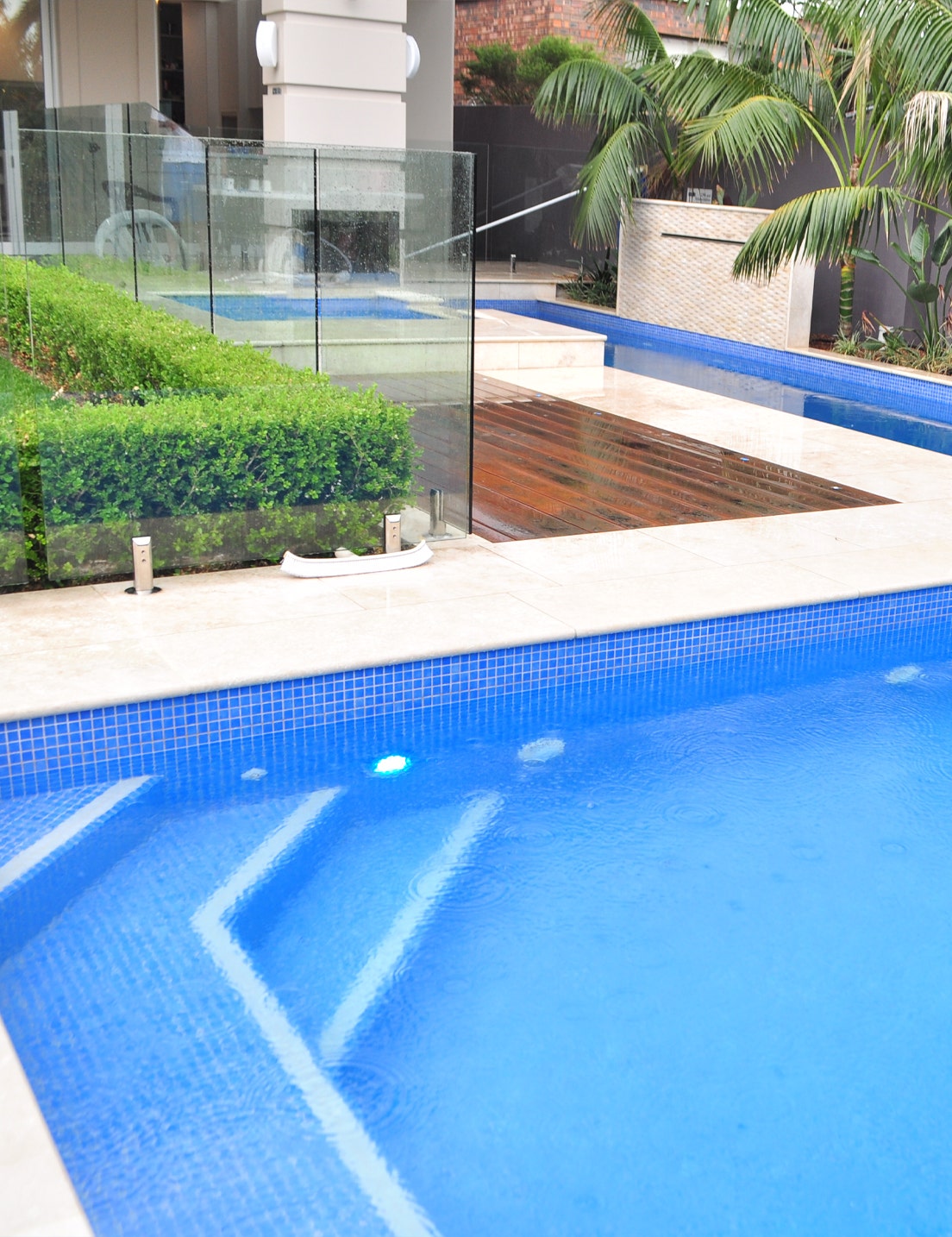

Barefoot Wet Ramp Test (A, B, C)
Before you tile your outside or pool area, to ensure there are no slips, here's another test we do.
The Barefoot Wet Ramp Test involves testers soaking their bare feet, then walking on inclined tiles sprayed with water to determine the unsafe angle. This test is most relevant for tiles to be used around swimming pools, showers and change rooms. So when you’re designing your outdoor or pool space, this one is important for you to check with our in-store consultants too.
Slip Resistance Value |
Corrected mean Acceptance Angle (Degrees) |
Slip Risk |
| A | 12-18 | High |
| B | 18-24 | Moderate |
| C | Over 24 | Very Low |
Featured Tiles
Pool Tile: Niebla Mid Blue Mosaic
Our Hot Tip: Everything you need to know about tiles is available in a handy download here.
Stair Nosings, Landings and Ramps
This one is mainly for bigger jobs such as residential buildings, it keeps everyone safe - so we are all over it!
The Australian Building Code and Australian Standards only mandate slip-rated flooring for stair nosings, stair landings and ramps.
Here's a helpful guide:
Slip Resistance Classifications referenced by BCA, NCC and Australian Standards
| Surface Conditions | Dry Surface | Dry Surface | Wet Surface | Wet Surface |
| Wet Pendulum Test | Oil-wet Ramp Test | Wet Pendulum Test | Oil-wet Ramp Test | |
| Stair treads or stairway landing surface | P3 | R10 | P4 | R11 |
| Nosings for stair treads and stairway landing edge strip | P3 | P4 | ||
| Ramps in buildings steeper than 1:20 but not steeper than 1:14 | P3 | R10 | P4 | R11 |
| Ramps in buildings steeper than 1:14 and not steeper than 1:8 | P4 | R11 | P5 | R12 |
BCA: Building Code of Australia NCC: National Construction Code Australian Standards AS4586-2013; HB198:2014
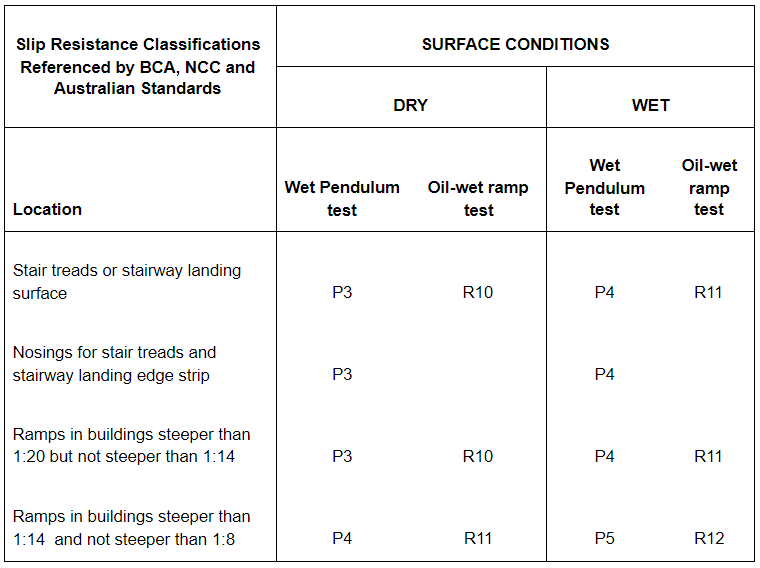

Our Hot Tip: Everything you need to know about tiles is available in a handy download here.
